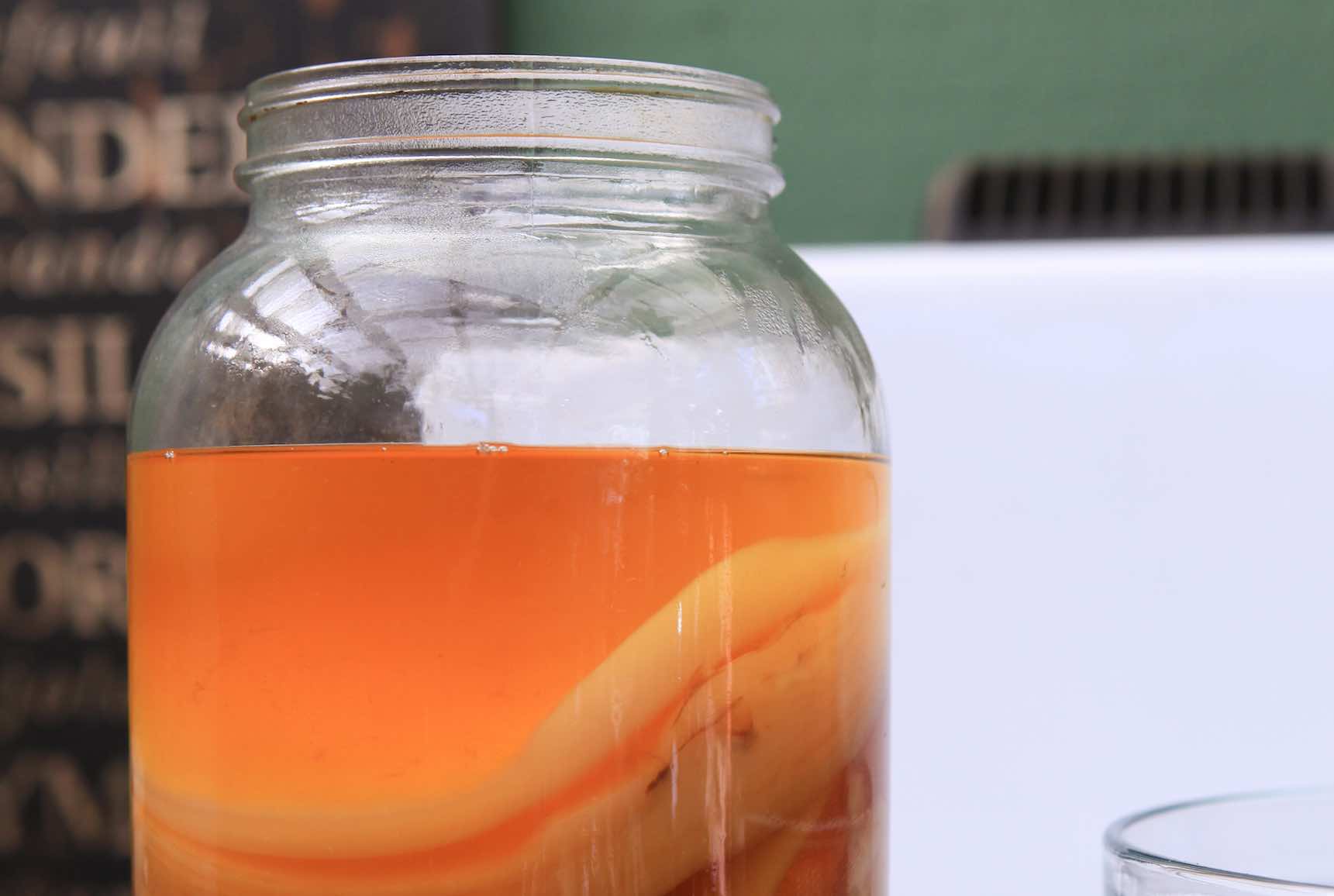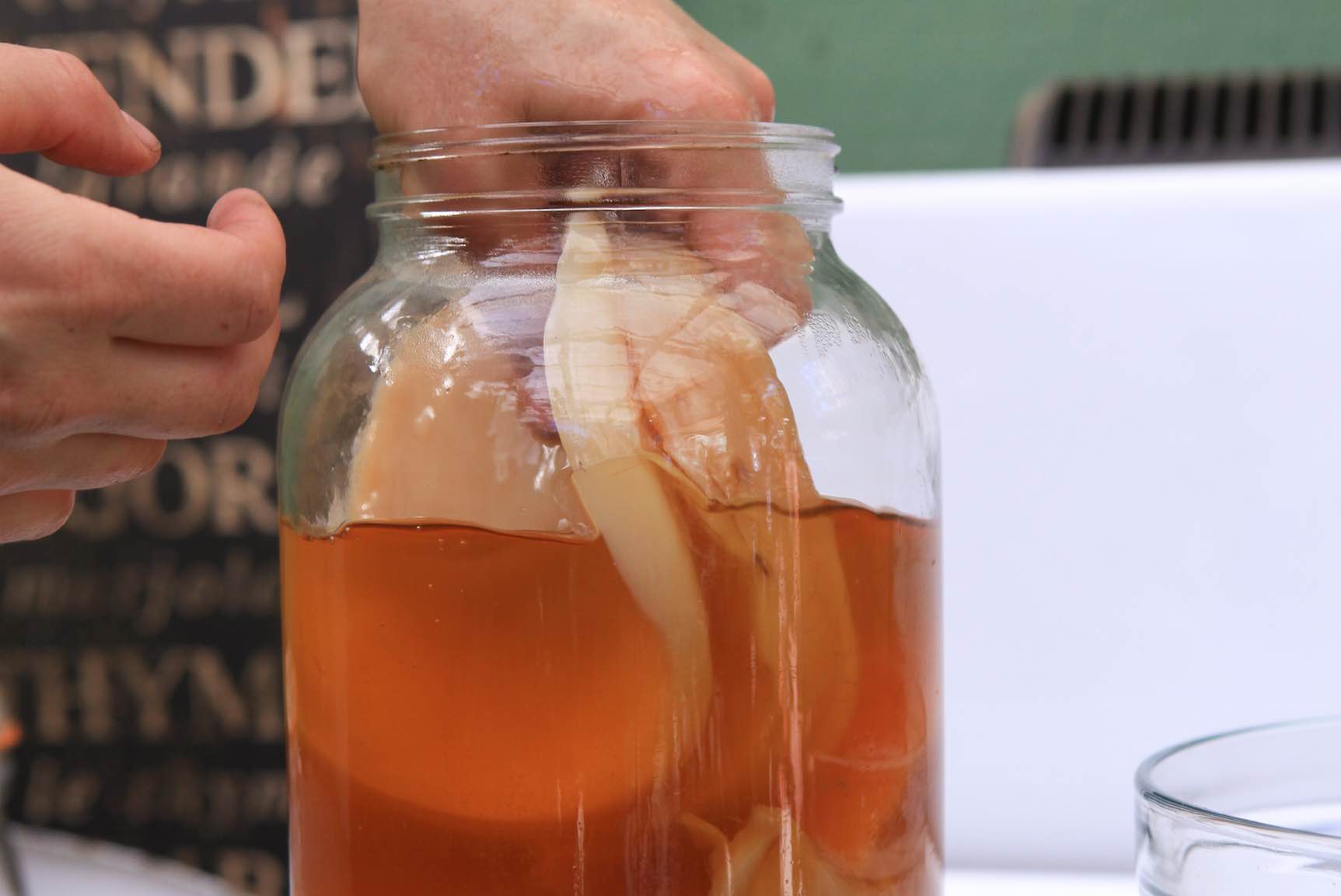- Continue Shopping
- Your Cart is Empty
Kombucha: A Love Story

The first time I encountered kombucha was in San Francisco, over a decade ago, now. My worldly city friend was brewing it on her countertop, and she poured me a slug of it, straight from the fermenter. I sniffed at it suspiciously, wrinkled my nose, squinted at the bizarre concoction lurking on the counter before me. I don't remember exactly what I said, but it was probably something along the lines of...
Is it supposed to look like that? Is it supposed to smell this way? And after my first tentative sip, there was sputtering and some serious face scrunching. I did not finish the glass.
It Was Not Love at First Sight
But love rarely happens like it does in the movies. As in so much of life, sometimes the true value and beauty in a thing is revealed to us slowly, after repeated encounters. How else would we learn to love so many other delicious things; coffee, bleu cheese, scotch, sushi?
Doubtless there are those who did in fact love their first taste of this mysterious concoction. But for me, the road was a long one, full of twists and turns, stops and starts.
What is Kombucha Anyway?
Most people have seen a SCOBY by now, right? (SCOBY is an acronym for Symbiotic Community of Bacteria and Yeast.) Also known as the mother, it is the gelatinous mass that floats at the top of a batch of sweetened black tea. It is also sometimes called a mushroom, but this is a misleading term, as the scoby is composed more of bacteria than yeast; yeast is a fungus, while bacteria have their own kingdom... And while there is much to be said about the science and the mystery of the SCOBY, for a moment I would just like to pause and dwell on it's appearance.
It is Crazy Looking
A young SCOBY floats serenely at the top of a batch of tea, a pale, clean layer, that forms in sheets or layers, one atop another. As the scoby ages, it becomes thicker, and starts to separate a little. Little yeast colonies can form in brown, ragged strings that hang down into the liquid. It looks like a jellyfish, like a fungus, like nothing but itself.
It looks like someone left a batch of tea out for a hundred years and this is what it grew into. But so much for poetry.
The SCOBY really is a miraculous arrangement. Made up of dozens of different strains of bacteria and yeast, it is literally a microscpoic community floating at the top of the jar, made up of billions of individual organisms, each doing their part. I like to picture them all holding hands with their little chemical bonds, each of them digesting sugars, caffeine, nitrogen, in their own way. Some of them, like the acetobacter and the gluconacetobacter, create cellulose as an apparent byproduct, which forms the physical body of the SCOBY. (The spirit comes from somewhere else.)
Kombucha is a Living Beverage
I use a term like dozens, because kombucha, like a river, is never the same twice. Depending on the type and percentage of sugar and tea, and the length of fermentation, and fermentation temperature, the exact microbial composition varies from batch to batch. There is some level of continuity, though, in the form of genus that are always present, though the exact species may vary.
Acetobacter is one of these. These are the bacteria most familiar to us for creating vinegar; the sharp zing of their flavor profile is evident in any batch of kombucha that has fermented 2 weeks on the counter. In addition, they are partially responsible for the creation of the SCOBY membrane as well. (Vinegar is also made with a kind of SCOBY).
Sacchromyces and brettanomyces are present as well, familiar to us as beer and wine yeasts; there are easily half a dozen varieties of these in every batch of 'buch. Various species of Lactobacillus, our yogurt and cheese fermenters, are also a component. Zygosaccharomyces kombuchaensis is a bacteria that seems to be exclusive to kombucha; found nowhere else in the world, still it is not solely or even primarily responsible for the creation of kombucha. It's a team effort on a microscopic level.
The Benefits of Kombucha
While the exact microbial composition of kombucha varies, all kombucha has properties in common. Long hailed as an immune system booster, digestive tonic, and anti-cancer treatment, these claims are only now beginning to get the scientific attention they deserve. While an exact cause and effect relationship can be difficult to establish, there is consensus that the bioactive components in kombucha are metabolized by the body in a way that exerts influence on a cellular level. Gluconic, acaetic, amino acids abound in this healing brew, as well as all of the beneficial probiotics that are a result of lactic fermentation.
Perhaps it is these health-enhancing properties that draw me to the beverage, over and over. It's the taste I once scorned, that I now crave, nearly every day. Perhaps on a cellular level, my body understands something that my taste buds only hint at -- this stuff is amazing!
At 3-5 bucks a bottle, though, the stuff ain't cheap. And my recycle bin was filling at an alarming rate with brown kombucha bottles. So, being a do-it-yourselfer, born and bred, the next step was obviously to make it myself. Today I want to share that process with you, so that you can do the same. I hope you enjoy, and remember to have fun while you're at it! - Jess Tunis.
Ready for the Next Step?
Check out our article on How to Easily Make Kombucha at Home or see our Kombucha Kit or Kombucha Starter Culture to start brewing your own batch in no time.
Over to You...
It’s part of our mission here at Mountain Feed to help you make delicious, sustainable, homemade food more often. Stop by and say hello on Facebook, Twitter, Instagram or Pinterest. Or, as always, you can do it the old fashioned way and come by the store to speak with one of our in-house experts.
Keeping a great journal leads to delicious results! Get inspired by new recipes, expert articles and homemade food adventures in our Monthly Journal.




